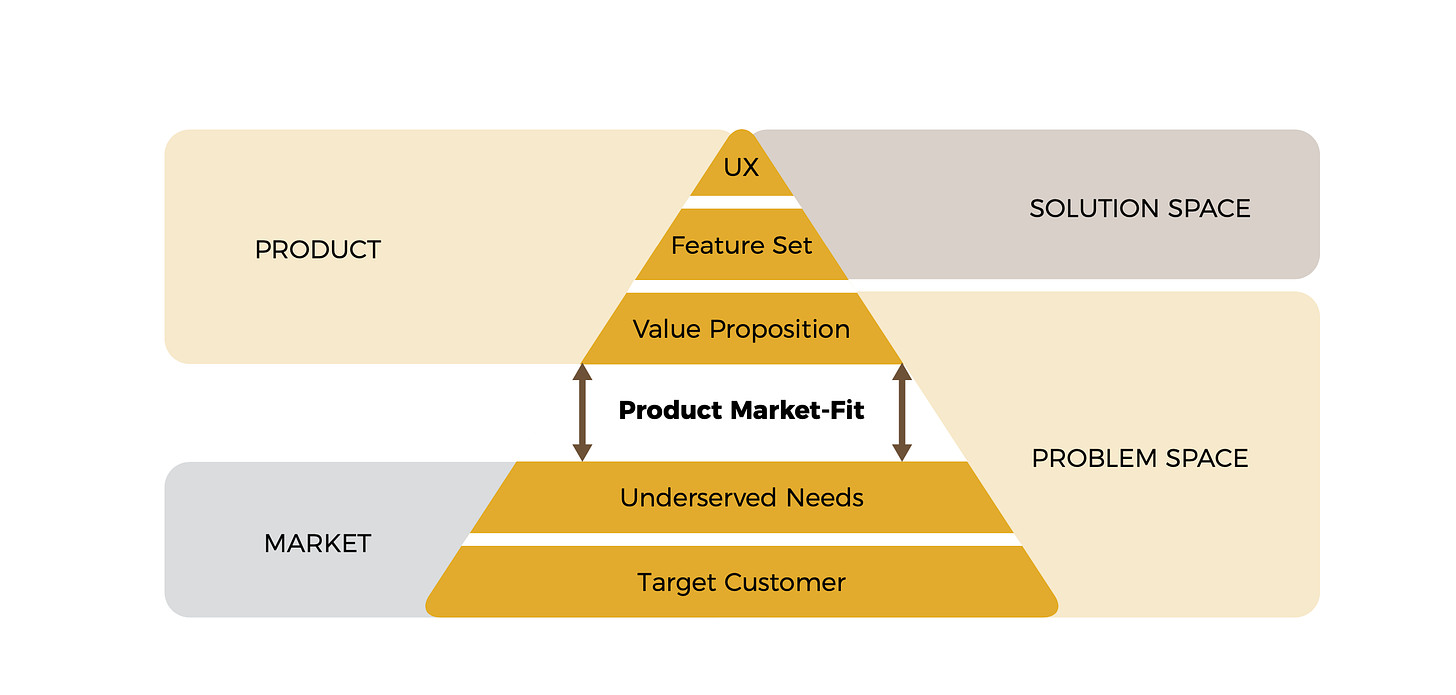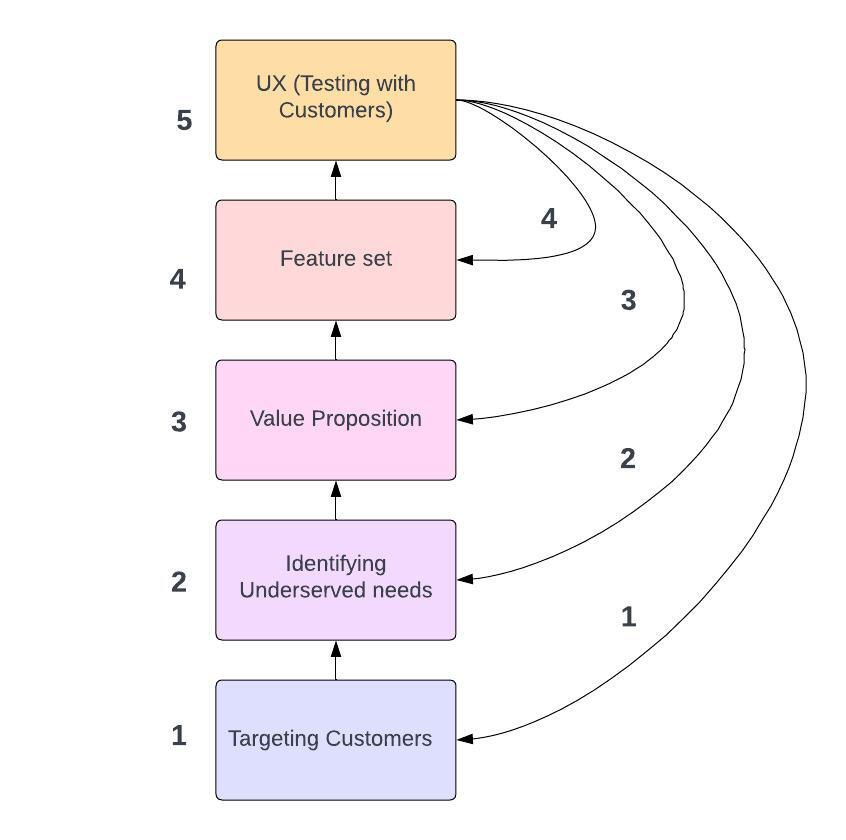The "Product-Market Fit" process as a fluid cycle
Reports show that between 35 - 42% of startups fail because they didn’t find the Product-Market Fit. That alone shows why this is the 7th consecutive article discussing Product-Market Fit. We have been using a pyramid designed by Dan & Olsen to explain the important steps to follow to achieve Product-Market Fit.
Just as a recap, we have discussed the market part that includes targeting your customers and identifying their underserved needs. We have also discussed the product part that includes defining the value proposition, defining the feature set, and the User experience side of testing your defined features to customers.
Now after discussing those different steps and sharing the high-level point, I want to discuss a new way of seeing this Product-Market Fit concept which will help you to understand better. The Product-market Fit is a dynamic cycle/loop. I designed this series of articles in a way that everyone who will read it, will easily have an idea of how the process works.
The Product-Market Fit as a dynamic cycle
Now that you are reading this article, I don’t want you to understand the Product-Market Fit process as a static pyramid, where when you have stepped up to another level, you won’t come back. Building digital products is always a fluid and smooth process. It’s like doing experimentations in a chemistry lab, you don’t have that fixed way to go through to achieve your goals, there will always be adjustments to plans, iterating the product until it becomes successful.
The above schema shows the steps that we have discussed and how they follow each other, but it also shows that after the UX step which is the last one, depending on the insights that we are getting from testing with customers, the process can become a loop and go back to different steps depending on what we want to change or improve.
Let’s discuss with the help of examples the scenarios that can happen and lead to the process becoming a loop.
1. Revisiting the “Customer targeting” part
When you are testing your idea through prototypes to customers, you have to expect different scenarios. One of the possible scenarios is finding that the solution you propose doesn’t suit the customers that you are targeting.
You might be addressing an existing issue and maybe you have the right solution, but maybe the customers that you are targeting are not the ones with that problem. This is sometimes called a pivot as discussed in one of my articles. When the scenario is like this, you go back to learning the market and see if the people you have targeted are the right ones, and if according to the results you have seen in testing are not the ones, there is an option of pivoting or changing your market (target customers).
2. Revisiting the “Underserved needs” part
Another possible scenario is when you are talking to customers and realize that the problem or need that you are addressing is not very important to them or not relevant. When you see this, it’s the right time to revisit your “Underserved needs” step and re-learn and see if you have identified the most crucial needs of your customers. Make sure you are focusing on the pain points of the customers if you want to find your Product-Market Fit.
3. Revisiting the “ Value proposition” part
There is now this scenario, where according to your test results you have the right market and you have identified their pain points correctly, but you can see that the solution idea that you have identified is not solving their problems. When you see this, you have to immediately revisit your “value proposition” step and re-do that process. Work together with your team, and make sure they all understand the problem.
This issue likes to happen when the whole team doesn’t understand the problem yet they are part of defining the value proposition.
4. Revisiting the “Feature set” part
Here is another interesting scenario that happens sometimes when you are building a digital product, where the market is right, you have correctly identified their pain points, and your solution idea is also well but the problem is the implementation or how you defined your features.
When the scenario is like this, it means your feature set is not reflecting your solution idea. Your customers can see that what you are trying to do is right, but the way is implemented still needs to be improved. Here you sit with your engineering team and re-think the features and see how you can improve it to the point where it becomes a reflection of your value proposition.
Concluding, this is a very smooth and fluid process. If you have revisited the first or the second step, you have to keep in mind that the next one might also need to be revisited because the next step is always done based on what has been done the previous. A kind reminder that the “Product-Market Fit” is not a destination, when you find it, you still have a long journey. A meaningful journey though.





